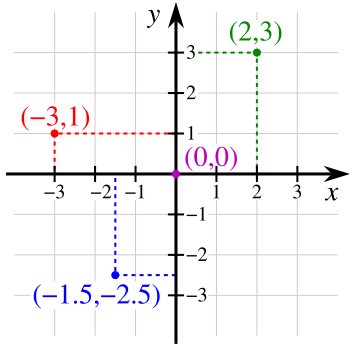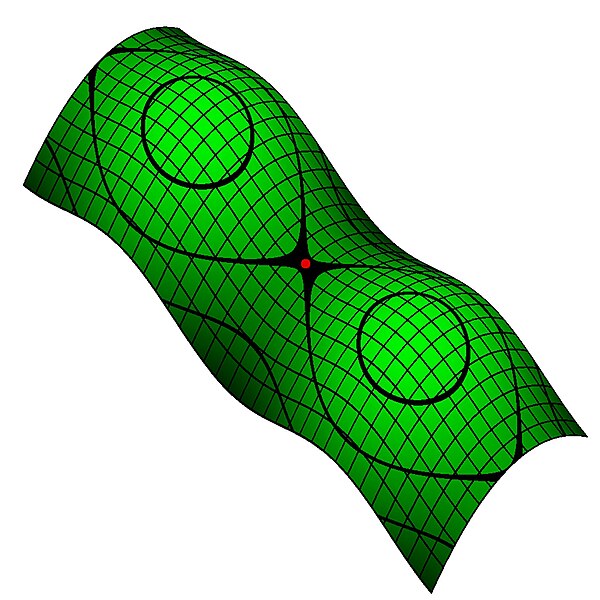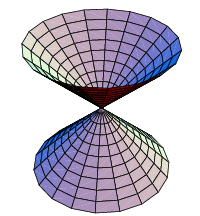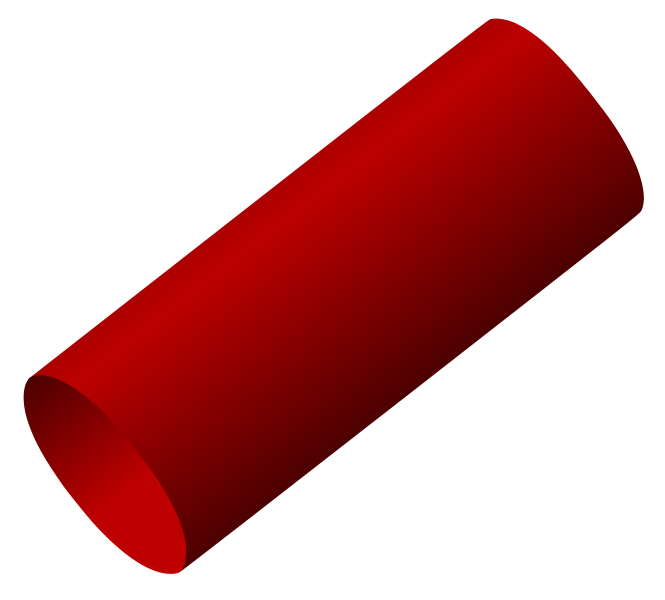A friend of mine made a request…
Any chance you could make an expository post on Lie Theory for those of us who only known some abstract algebra and calculus? The topic seems very inaccessible otherwise, but I hear Lie Groups and Lie Algebras mentioned regularly.
As your friendly neighbourhood mathematician I will try to oblige.
Disclaimer What I do is give an informal overview and not worry too much about details and proper proofs. Proofs you can find in textbooks. Rather I want to present the ideas and sketch some constructions.
I will build this account up over the period of a few weeks.
Rough Plan
The things I would like to cover are the following.
- Abstract Lie algebras
- Lie groups
- The Lie algebra of a Lie group
- Lie’s theorems
- Some odds and ends (Maybe a few words about Lie groupoids etc)
There maybe some changes here as the work develops.
I will also include some simple exercises for those that are interested. I will post solutions at the end.
Part 0: Introduction
Anybody who reads anything about modern physics will encounter the terms ‘Lie group’ and ‘Lie algebra’. Lie theory is all about the relation between these two structures.
A Lie group is a group that also has a smooth manifold structure, importantly the group operations are compatible with this smooth structure. Groups represent transformations and symmetries of mathematical objects. Lie groups are the mathematical framework for studying continuous symmetries of mathematical objects. Thus, Lie groups are fundamental in geometry and theoretical physics.
Now, every Lie group has associated with it a Lie algebra, whose vector space structure is the tangent space of the Lie group at the identity element. The Lie algebra describes the local structure of the group. Informally one can think of the Lie algebra as describing the elements of the Lie group that are ‘very close to the identity element’.
The theory of Lie groups and Lie algebras was initiated by Sophus Lie, and hence the nomenclature. Lie’s motivation was to extend Galois theory, which proved useful in the study of algebraic equations, to cope with continuous symmetries of differential equations. Lie laid down much of the basic theory of continuous symmetry groups.
The plan is with these notes is to sketch the relation between Lie groups and Lie algebras. I will stick to the finite dimensional case for this first look.
Part I: Abstract Lie algebras
Let us start with a completely algebraic set-up. Informally, a Lie algebra is a vector space with a non-associative product, known as a ‘bracket’ that satisfies some nice properties. We will only consider algebras over the reals or complex here, though everything will generalise to more arbitrary fields (with some minor modifications if necessary).
Definition
A Lie algebra is a vector space \(\mathfrak{g}\) together with a bilinear operation \([\bullet,\bullet]: \mathfrak{g} \times \mathfrak{g} \rightarrow \mathfrak{g}\), that satisfies the following conditions
- Skewsymmetry
\([x,y] = -[y,x]\) - Jacobi identity
\([x,[y,z]] + [z,[x,y]] +[y,[z,x]]=0\)
for all \(x,y, z \in \mathfrak{g}\).
Note that Lie algebras are non-associative. Thinking of the bracket as a form of multiplication we see that the Jacobi identity is related to the ‘associator’ which is non-zero in general
\([x,[y,z]] -[[x,y],z]= [x,[y,z]] + [z,[x,y]] = [[z,x],y] \neq 0\).
The Jacobi identity can also be written in ‘Loday form’
\([x,[y,z]] = [[x,y],z] + [y,[x,z]]\),
which means that the operator \(Ad_{x}:= [x, \bullet]\) satisfies the Leibniz rule, the so called adjoint operator is a derivation. Note that this form of the Jacobi identity has this interpretation even if the bracket is not skewsymmetric. In fact such bracket algebras are well studied and are usually called “Loday” or “Leibniz-Loday” algebras.
The dimension of a Lie algebra is defined to be the dimension of the underlying vector space. Elements of a Lie algebra are said to generate that Lie algebra if they form the smallest subalgebra that contains these elements is the Lie algebra itself.
Example Any vector space equipped with a vanishing bracket \([x,y]=0\), is a Lie algebra. We call any Lie algebra with a vanishing bracket an abelian Lie algebra.
Example The (real) vector space of all n×n skew-hermitian matrices together with the standard commutator is Lie algebra. This Lie algebra is denoted \(\mathfrak{u}(n)\).
Example The Heisenberg algebra is the Lie algebra generated by three elements x,y,z and the Lie brackets are defined as
\([x,y] =z\), \([x,z] =0\) and \([y,z] =0\).
Given a set of generators \(\{T_{a}\}\) we can define the Lie algebra in terms of its structure constants. As the Lie bracket of any pair of generators must be a linear combination of the generators we have
\([T_{a}, T_{b}] = C^{c}_{ab}\: T_{c}\),
and so the Lie algebra is determined by the structure constants \(C^{c}_{ab}\).
Exercise How many one dimensional Lie algebras are there up to isomorphisms?
Exercise There are exactly two Lie algebras of dimension two over the real numbers, up to isomorphism. Can you write these down in terms of generators?
Exercise What conditions do the structure constants need to satisfy in order to have a Lie algebra? (Hint: think about the two defining conditions of a Lie algebra)
People study Lie algebras in their own right, but historically they arose from the study of Lie groups. From my own perspective, it is the fact that Lie algebras are ‘infinitesimal Lie groups’ that makes them interesting and useful. In the next section I will move on to groups and in particular Lie groups.
Part II: Lie groups
Before we move on to Lie groups, let us recall the notion of a group. Generically, one thinks of groups as encoding transformations and symmetries of mathematical objects, so they arise all across mathematics.
Definition
A group is a set \(G\) together with a binary operation \(\circ: G \times G \rightarrow G\) that satisfies the following axioms
- Associativity
For every \(a,b,c \in G\) we have \((a\circ b) \circ c = a\circ (b \circ c)\). - Existence of the identity
There exists an element \(e \in G\) such that \(e\circ a = a \circ e\) for all \(a \in G\). - Existence of inverse elements
For every \(a \in G\) there exists an element \(b := a^{-1}\) such that \(a\circ b = b \circ a =e\).
It can be shown that the identity element \(e\) is unique. There is only one identity element. Note we have said noting about commutativity. Generally \(a\circ b\) is not the same as \(b\circ a\). Groups for which these two expression are always equal are called abelian groups.
Example The set of integers \(\mathbb{Z}\) together with standard addition form an abelian group. The identity element is zero and the inverse of any element is \(a^{-1} = {-}a \).
Exercise Does the set of real numbers \(\mathbb{R}\) equipped with standard addition form a group? Does the set of real numbers with standard multiplication form a group?
Example A symmetric group a set consists of permutations on the given set; ie. bijective maps from the set to itself. The product is just composition of the permutations as functions. The identity element is just the identity function from the set to itself. The inverse of an element is just the inverse as a function.
Example Probably the simplest non-abelian group is the rotation group \(SO(3)\). This group consists of all rotations about the origin of three-dimensional Euclidean space and the composition is just standard composition of linear maps. Because all linear transformations can be represented by matrices (once a basis has been chosen) the group \(SO(3)\) can be represented by the set of orthogonal 3×3 matrices and standard matrix multiplication. This group is non-abelian as the order of which rotations are composed matters.
Now, Lie groups are both groups and smooth manifolds at the same time. Before we make this statement a bit more precise I should say a few words about manifolds…
For an informal overview of the idea of manifolds you can consult an earlier post I made here. I will assume everyone had read this, or is at least familiar with the basic idea. I will review the minimum needed to define a Lie group.
A manifold is a ‘space’ that is locally similar to \(\mathbb{R}^{n}\) for some n. A smooth manifold is a refinement of that notion to allow us to do calculus. Any manifold can be described by a collection of charts, also known as an atlas.
An atlas on a topological space \(X\) (say) is a collection of pairs \(\{(U_{\alpha},\phi_{\alpha})\} \) called charts, where the \(U_{\alpha}\) are open sets that cover the topological space, such that
\(\phi_{\alpha}: U_{\alpha} \rightarrow \mathbb{R}^{n},\)
is a homomorphism of \(U_{\alpha}\) onto an open subset of \(\mathbb{R}^{n}\). Loosley this means that locally we can ways think about cutting our topological space up into small pieces of the real linear space.
The transition maps are defined as
\(\phi_{\alpha \beta}:= \phi_{\beta} \circ \phi^{-1}_{\alpha}|_{\phi_{\alpha}(U_{\alpha} \cap U_{\beta})}: \phi_{\alpha}(U_{\alpha} \cap U_{\beta}) \rightarrow \phi_{\beta}(U_{\alpha} \cap U_{\beta}).\)
Any topological space with an atlas is a topological manifold. Loosley, the transition maps allow you to sew together the local patches by telling you what happens on the overlap of such patches.
We will be interested smooth manifolds, that is we insist that the transition maps be infinitely differentiable in the standard sense. Because we can describe everything locally on a smooth manifold in terms of smooth transition functions and local patches of \(\mathbb{R}\) we can extend all our knowledge of standard multi-variable calculus to smooth manifolds.
In particular we know what a smooth map between two smooth manifolds is. As topological spaces a map between smooth manifolds is a continuous map. To define it as ‘smooth’ we compose the function with a chart on our source and target manifolds and as we know what smoothness means for map from \(\mathbb{R}^{n}\) to say \(\mathbb{R}^{m}\) we can accordingly define smoothness for maps between smooth manifolds.
Exercise Fill in details for the above paragraph.
We can now state what a Lie group is…
Definition A Lie group \(G\) is a smooth manifold that also carries a group structure whose product and inversion operations are smooth maps.
That is both
\(\mu : G \times G \rightarrow G\)
\((x,y) \mapsto \mu(x,y) = x\cdot y\)
and
\(inv : G \rightarrow G\)
\(x \mapsto x^{-1}\)
are smooth maps.
Examples to follow…






